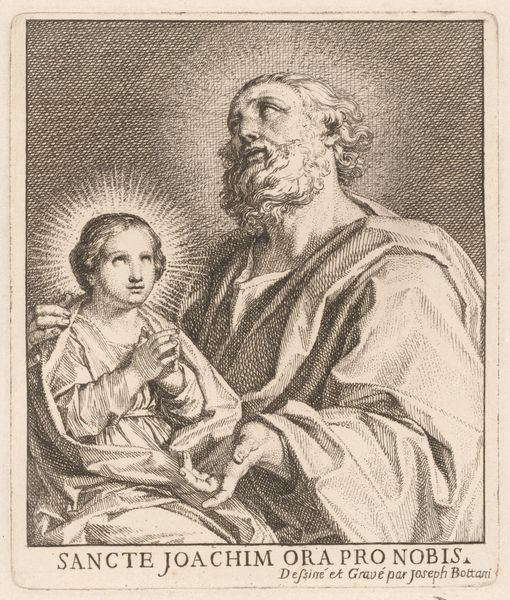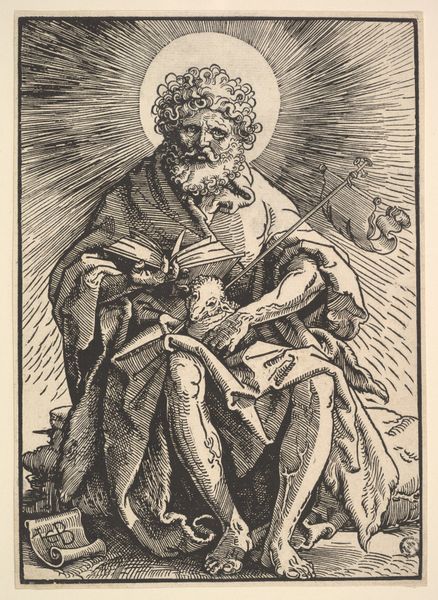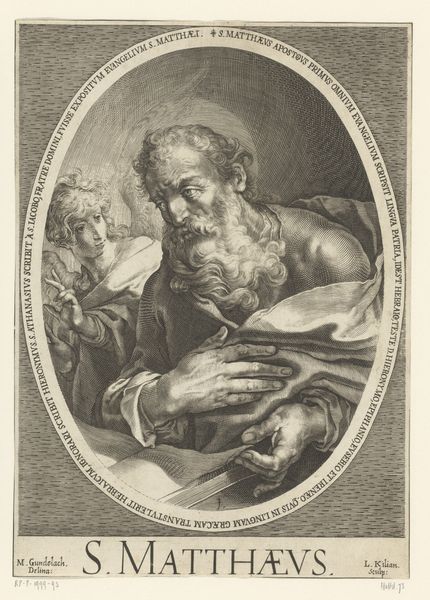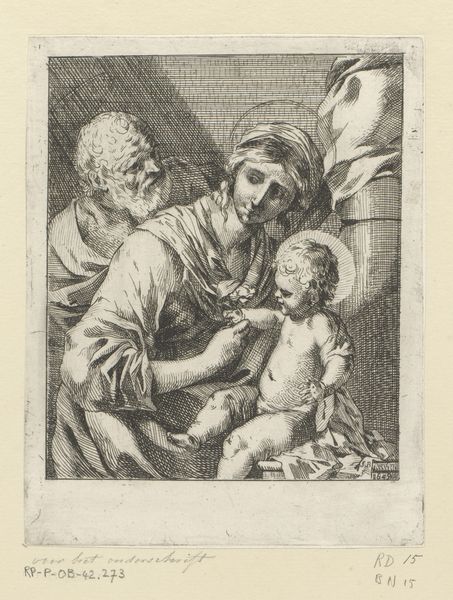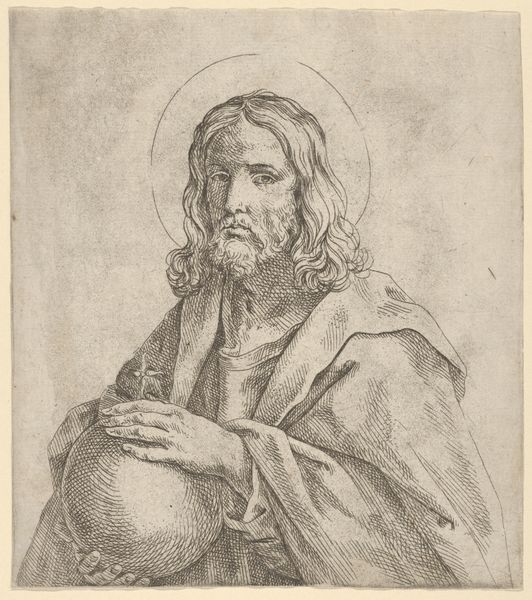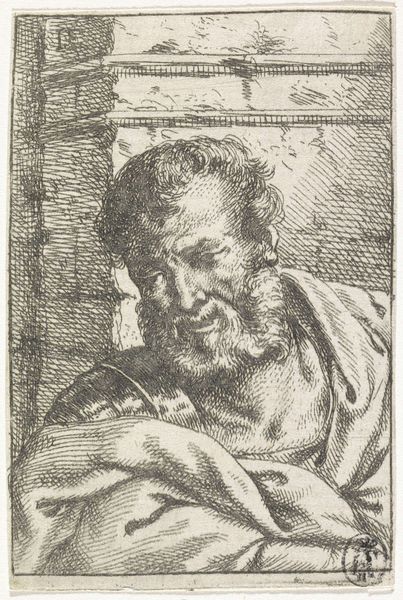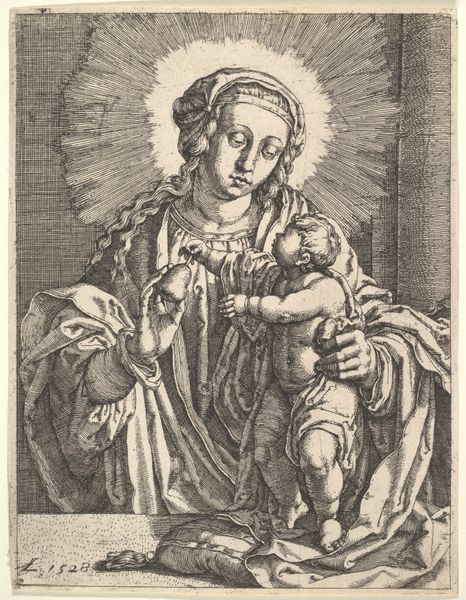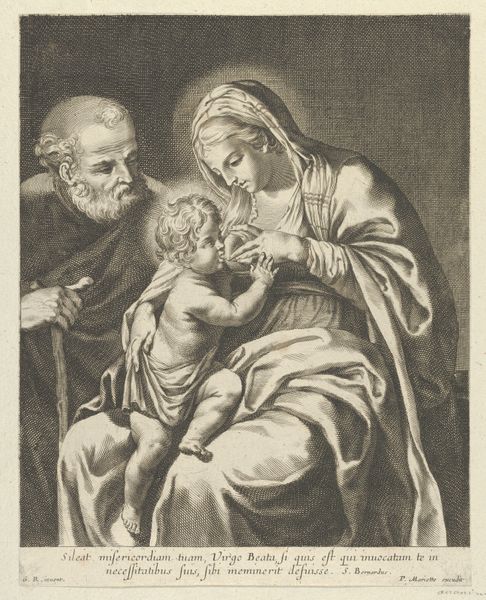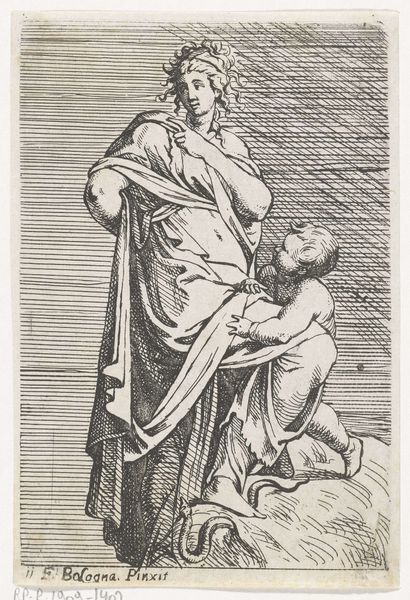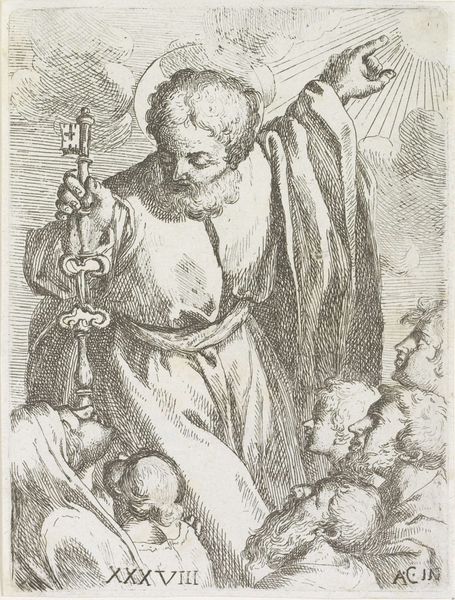
#
pencil drawn
#
toned paper
#
facial expression drawing
# print
#
pencil sketch
#
old engraving style
#
portrait reference
#
pencil drawing
#
pen-ink sketch
#
portrait drawing
#
pencil work
Dimensions: plate: 11.11 × 9.53 cm (4 3/8 × 3 3/4 in.) sheet: 29.53 × 22.38 cm (11 5/8 × 8 13/16 in.)
Copyright: National Gallery of Art: CC0 1.0
Curator: Before us we have "Saint Joseph and the Infant Jesus," a print created around the mid-18th century by Giuseppe Bottani. The piece uses fine lines to create depth. Editor: I’m struck immediately by the light – or the suggestion of it. See how those radiating lines practically explode behind Saint Joseph's head? It makes the scene feel both holy and intensely intimate, as if we’re catching a private moment. Curator: The engraving technique is quite refined, utilizing hatching and cross-hatching to model the figures and create a sense of volume on the toned paper. Observe how the density of lines defines form and shadow, contributing to a somber yet dignified atmosphere. Editor: Dignified indeed, but there's something… tender about it too. Joseph's gaze upwards and that hand gently placed – he seems to be almost presenting Jesus, not just holding him. There’s a kind of quiet awe there that speaks volumes. The textures, despite the print medium, hint at the softness of fabric and the baby’s skin, juxtaposed with the rougher lines of Joseph's beard. Curator: Absolutely, and notice how Bottani uses the compositional structure, placing Saint Joseph predominantly at the top, drawing our eye towards his face and his gesture of devotion. This directional pull complements the underlying religious narrative while accentuating formal elements like line, value and contrast. Editor: Right! I can’t help thinking about all the unspoken emotions here. The vulnerability of the child against the potential burdens that lie ahead for this family… it’s heavy stuff, but it’s also shot through with a gentle love. The way the light reflects of the Baby's head draws me in. Curator: Agreed. Ultimately, Bottani successfully uses printmaking’s formal constraints to communicate complex theological ideas alongside profoundly felt human experience. Editor: Yes, the artwork reminds us that even in the most formal or traditional presentations of faith, there's room for vulnerability, humanity, and the messy, beautiful reality of being human… or divine.
Comments
No comments
Be the first to comment and join the conversation on the ultimate creative platform.
